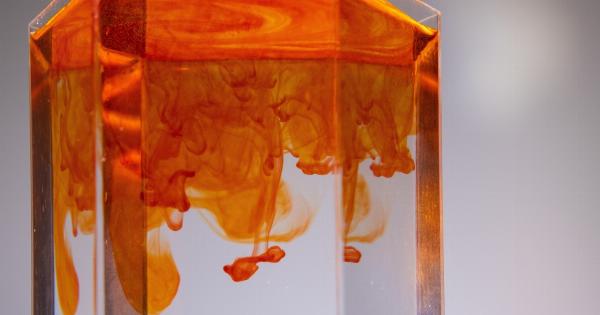Cancerous wounds and noncancerous olive wounds may appear similar at first glance, making it important to recognize their dissimilarities for effective diagnosis and treatment.
While both types of wounds can cause discomfort and concern, understanding their distinct characteristics can help individuals seek appropriate medical care and intervention. This article aims to shed light on the dissimilarities between noncancerous olive wounds and cancerous wounds, providing valuable information for early detection and prevention.
Noncancerous Olive Wounds
Noncancerous olive wounds, also known as benign wounds, typically occur as a result of injury or trauma to the skin. These wounds do not exhibit malignant characteristics and typically heal without complications.
The appearance of a noncancerous olive wound may vary depending on the cause and location of the injury. Common examples of noncancerous olive wounds include cuts, abrasions, and burns.
Characteristics of Noncancerous Olive Wounds
Noncancerous olive wounds often display specific characteristics that can assist in their identification. These characteristics include:.
- Rapid Healing: Noncancerous olive wounds tend to heal quickly and efficiently, with the body’s natural healing mechanisms effectively closing the wound and restoring the skin’s integrity.
- Absence of Persistent Pain: Benign wounds usually cause transient discomfort or pain during the initial stages of healing. However, this pain should gradually diminish as the wound progresses towards healing.
- No Progressive Growth: Noncancerous olive wounds do not exhibit progressive growth over time. Once the wound starts to heal, the size should gradually reduce until it fully closes.
- Lack of Bleeding: Benign wounds typically do not display excessive or continuous bleeding. The bleeding associated with these wounds is often minimal and stops relatively quickly.
- Smooth Edges and Uniform Color: The edges of noncancerous olive wounds are typically well-defined and display a uniform color. This characteristic indicates a healthy healing process.
- No Irregular Borders: Unlike cancerous wounds, noncancerous olive wounds do not show irregular or jagged borders. The borders of benign wounds are usually smooth and symmetrical.
Treatment of Noncancerous Olive Wounds
The treatment of noncancerous olive wounds primarily focuses on ensuring proper wound healing and preventing infection. Depending on the severity and location of the wound, treatment options may include:.
- Cleaning and Disinfecting: Proper cleaning and disinfection of the wound help prevent bacterial growth and reduce the risk of infection. Antiseptic solutions or mild soap and water can be used for this purpose.
- Bandaging: Covering the wound with a sterile bandage or dressing protects it from further injury and contamination. Bandages should be regularly changed to maintain cleanliness.
- Topical Medications: Application of antibiotic ointments or creams may be recommended to promote wound healing and prevent infection. These medications should be used as directed by a healthcare professional.
- Pain Management: Over-the-counter pain relievers can help alleviate any discomfort associated with the noncancerous olive wound. However, it is essential to follow the recommended dosage and consult a healthcare professional if the pain persists or worsens.
- Monitoring and Follow-up: Regular monitoring of the wound’s progress and following up with healthcare professionals is crucial for ensuring proper healing and identifying any potential complications.
Cancerous Wounds
Cancerous wounds, unlike noncancerous olive wounds, are the result of abnormal cell growth and malignant changes within the body.
These wounds are often associated with various types of skin cancer, including basal cell carcinoma, squamous cell carcinoma, and melanoma.
Characteristics of Cancerous Wounds
Identifying the characteristics of cancerous wounds is vital for early detection and treatment. The following traits are commonly observed in cancerous wounds:.
- Slow or Non-Healing: Cancerous wounds may persist for an extended period without significant signs of healing. Unlike noncancerous olive wounds, they do not follow the typical healing trajectory.
- Chronic Pain: Cancerous wounds often cause persistent pain that may increase over time. This pain can be described as throbbing, burning, or sharp.
- Progressive Growth: One of the key distinguishing factors of cancerous wounds is their tendency to grow or increase in size continuously. The wound may appear to enlarge or deepen as cancerous cells proliferate.
- Bleeding and Discharge: Cancerous wounds commonly exhibit bleeding or discharge, which may be intermittent or continuous. The bleeding is often more pronounced than that associated with noncancerous olive wounds.
- Irregular Borders: Unlike the smooth and well-defined borders of noncancerous olive wounds, cancerous wounds display irregular and jagged edges. The borders may be uneven and asymmetrical.
- Changes in Color and Texture: Cancerous wounds can exhibit changes in color and texture, often characterized by darkening, reddening, or ulceration of the affected area. The skin may appear scaly or crusted.
Treatment of Cancerous Wounds
Timely treatment of cancerous wounds is crucial for preventing the spread of malignant cells and improving prognosis. The specific treatment approach depends on the type, stage, and location of the cancer. Treatment options may include:.
- Surgical Excision: Surgical removal of the cancerous wound and surrounding tissue is often performed to eliminate the cancer cells. This procedure aims to achieve complete excision and prevent further spread.
- Radiation Therapy: Radiation therapy utilizes high-energy radiation to target and destroy cancer cells. It may be employed before or after surgery to ensure thorough treatment.
- Chemotherapy: Chemotherapy involves the administration of drugs that kill cancer cells or inhibit their growth. It can be used as a primary treatment or in combination with other modalities.
- Immunotherapy: Immunotherapy enhances the body’s immune response to fight against cancer cells. This treatment modality can be effective in certain types of skin cancer.
- Palliative Care: In cases where the cancerous wound is advanced and cannot be fully treated, palliative care aims to improve the patient’s quality of life by managing pain, reducing symptoms, and providing emotional support.
Conclusion
Recognizing the dissimilarity between noncancerous olive wounds and cancerous wounds is crucial for accurate identification, prompt medical intervention, and appropriate treatment.
While noncancerous olive wounds generally follow a predictable healing trajectory with specific characteristics, cancerous wounds display distinct traits that require urgent attention and specialized care. If you notice any unusual or concerning changes in a wound, it is imperative to seek medical advice to determine the appropriate course of action.
Regular self-examinations and consulting healthcare professionals can contribute to early detection, successful treatment, and improved overall outcomes.




























